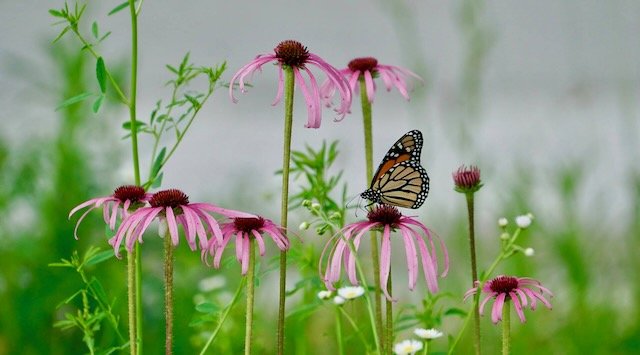World Wetlands Day: Why Wetlands Matter
February 2nd is World Wetlands Day—let’s celebrate the importance of wetlands and the crucial role they play in protecting our environment. Wetlands act as a buffer between land and water, safeguarding the health of both environments while creating their own special and unique aquatic ecosystems. A wide variety of plants and animals thrive in wetlands too.
Wetlands are not only beautiful, but they also offer essential services that keep our communities safer and our ecosystems healthier:
Protecting People and Property: Wetlands help prevent floods by holding water during storms and reducing property damage in nearby areas.
Refilling Drinking Water: Wetlands allow floodwater to filter through the soil, replenishing underground aquifers that supply clean drinking water.
Filtering Polluted Water: Wetlands act as natural filters, trapping pollutants and keeping our rivers cleaner and safer for wildlife and recreation.
Fish & Wildlife Habitat: Wetlands provide critical habitats for fish, migratory birds, and countless wildlife species. These ecosystems support biodiversity and are essential for the survival of many species.
Our celebrations can inspire simple actions like reducing waste, respecting natural areas, and supporting local conservation efforts. These small steps help protect delicate ecosystems for generations to come. Every little bit counts in keeping our wetlands healthy.
Explore wetlands near you! Missouri has many beautiful wetlands waiting to be discovered:
• Cardinal Valley Habitat Restoration Area (Webb City, MO)
• Shawnee Trail Conservation Area (McDonald County, MO)
• Schell-Osage Conservation Area (Shell City, MO)
• Mingo National Wildlife Refuge (Puxico, MO)
• Stockton Lake Wetlands (Stockton, MO)
For more information, visit the Missouri Department of Conservation's Wetlands Page.
Submitted by: Amera Wild
Photo from Missouri Department of Natural Resources site (Cardinal Valley, Webb City, MO)
https://dnr.mo.gov/waste-recycling/investigations-cleanups/natural-resource-damage-assessment-restoration-nrdar/southwest/cardinal-valley-habitat




















